How We Build CNC
This part is what you can't see on your configuration sheet or quotation. But it is crucial to the performance of the CNC machine. A high-quality CNC machine is not only high in configuration, but its production process should also be scientific and standardized. Conversely, a highly configured machine cannot perform its best performance if its production process is unscientific. In this case, high configuration becomes a waste
So EagleTec strongly suggests that except the configuration and price, we should also check how the CNC is built. Below is detailed procedure how we build CNC.
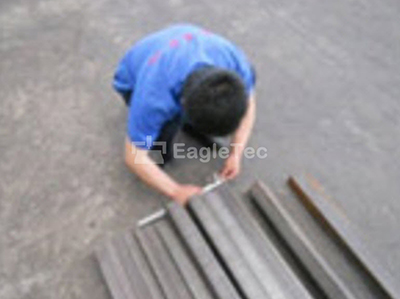
Procedure 1
Raw material inspection: First, check whether the specifications of raw materials are exactly the same as the customer's requirements. Second is to check if it has quality defects. Only the raw materials that meet both requirements can proceed to next manufacture procedure.
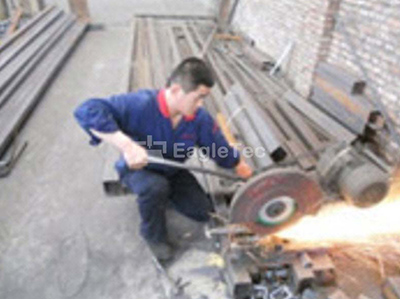
Procedure 2
Cutting & Machine Base Welding: Skilled workers execute in strict accordance with the drawings.
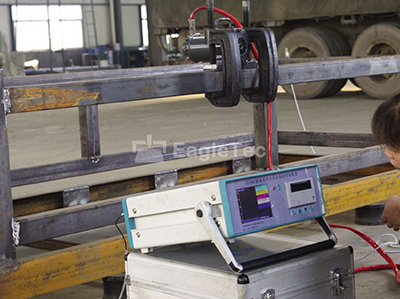
Procedure 3
VSR Treatment: Each CNC Machine Base must be processed via vibrating stress relief (VSR) to reduce residual stress after welding is completed. The advantage of this process is that stress can be eliminated and rigidity can be increased to improve the accuracy of the CNC.
FYI: VSR is the use of resonance principle to eliminate and homogenize the residual stress of metal castings, forgings, welded structural parts, non-ferrous metals, etc., to prevent dimensional deformation and cracking of parts.
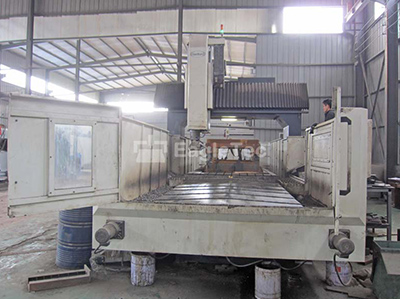
Procedure 4
Five Face CNC Machining Center: The mounting base and mounting holes that determine accuracy are fine machined with a high precision 5-axis CNC metal machining center. For example: the base level for the linear guideway and the rack assembly, the mounting hole of the positioning cylinder, etc.
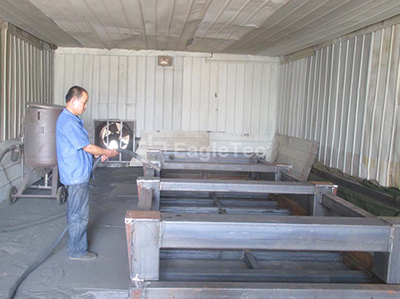
Procedure 5
Sandblasting process: Every CNC construction must be processed via sand-blasting treatment. This is done to increase the adhesion area to increase the adhesion between the surface of the bed and the painting layer, and to extend the durability of the layer. So finally, prevent CNC body from corrosion and definitely get the machine a longer service time.
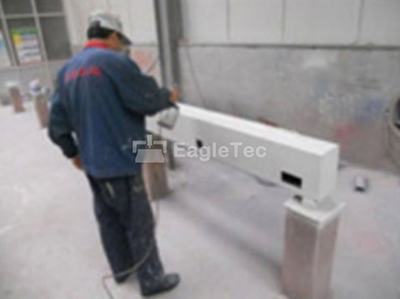
Procedure 6
Painting: Skilled workers carry out spraying operations, the paint surface is plane and smooth.
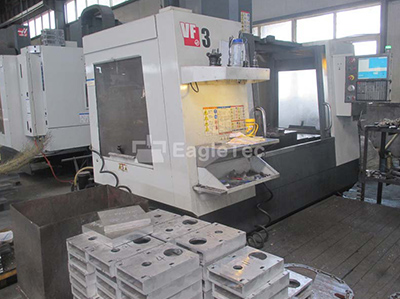
Procedure 7
Other Small mechanical parts machining: other precise parts like the gear box, sliding plate, side plate etc. are fine machining by high precision CNC lathe. This guarantee their perpendicularity and levelness exactly, so to ensure no gap between parts in the process of the assembly. FYI, gaps will make machine bad stability and bad accuracy performance.
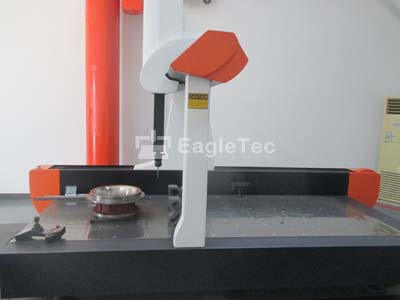
Procedure 8
Three-coordinate detector inspection: The core components of EagleTec CNC all need to be tested by a three-coordinate detector to ensure that the accuracy meets the CNC's accuracy requirements. Only accessories that meet the accuracy requirements can flow into the next production step.
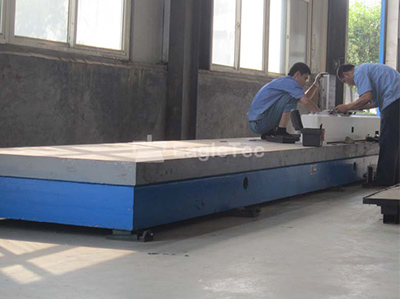
Procedure 9
Mechanical assembly: Mechanical assembly is absolutely a critical step in CNC precision and performance throughout the manufacturing process. So how do we guarantee the assembly accuracy of this process?
The Z-axis assembly of each machine is implemented on a high-precision professional mechanical assembly platform, not other surface. This can avoid error caused by asperous surface. FYI, Z axis is the most precise part for CNC. So it’s assembly is very important for a machine’s accuracy performance.
The connection between CNC mechanical parts is fixed by nuts and bolts. Before that, we have to punch holes first. Imagine if the hole that is punched out is not perpendicular to the plane, after we tighten it with nuts and bolts, its stability will certainly not reach its maximum. How does EagleTec prevent this problem from happening? Every tapping or boring must be done via professional drill press, instead of hand drill. So that the holes are perpendicular to the plane.
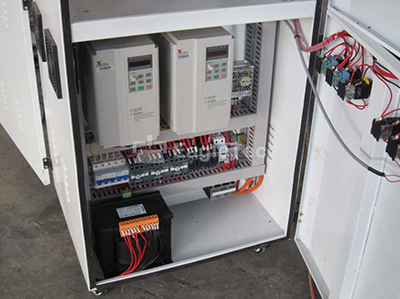
Procedure 10
Electronic cabinet wiring: Skilled technicians follow the IEC electrical standards, and each wire is marked with a line number for future circuit maintenance and diagnose.
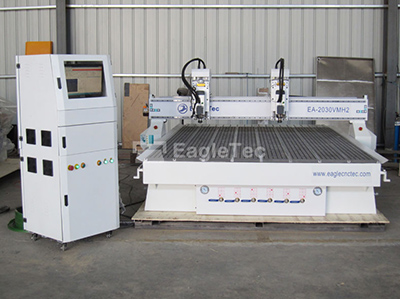
Procedure 11
Integrated assembly: Connect the electrical control cabinet to all the motion axes on the CNC machine.
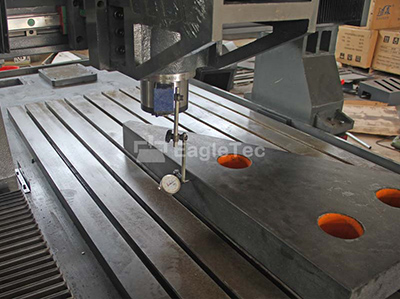
Procedure 12
Debugging: Debugging is strictly performed by skilled technician. This consists of two parts, the control unit and the mechanical precision. The control unit debugging usually includes the inverter parameters setup, driver parameters setup, and CNC control system parameters setup. The debugging of mechanical precision is the second key step affecting CNC performance beyond mechanical assembly in procedure 9. EagleTec uses marble squares and dial gauges for CNC accuracy debugging. As we all know, marble is the least deformed substance in nature, so it is often used for precise weights and measures. The dial gauge is also a precision measuring instrument. In the field of CNC manufacturing, it is generally used to check mechanical errors. (such as flatness, verticality, etc.), also used for precision alignment of CNC. After repeated corrections, the error of the CNC is reduced to a reasonable range, usually within 0.08 to 0.5mm according to different configuration.
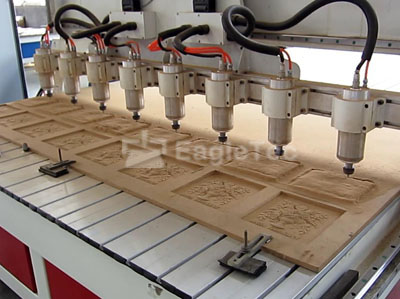
Procedure 13
Inspection and running-in: Every CNC has to pass at least 24 hours of non-stop mill testing, which is to test the stability of the machine.
Procedure 14
Final Test: Our cnc machines have to go through a rigid inspection before they are shipped. In this process, our strict quality inspection technicians will conduct a final comprehensive inspection of the machine including accuracy, stability, appearance, cleanliness, and safety warning sign. We test the accuracy of the machine to meet the factory requirements by embossment carving and circle cutting test. When the circle is cut, XY is simultaneous, so it is the best way to check how the accuracy is. All items are approved before they can enter the next step. Otherwise, return to the production department to correct the error.
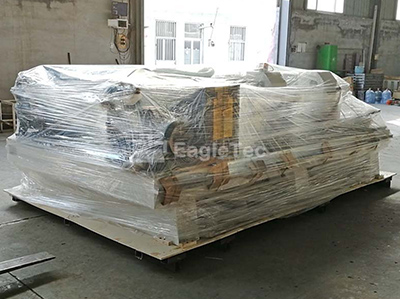
Procedure 15
Packing: machine is packed by skilled workers. They will take into consideration every potential collision risk that may occur during the shipping process, and then they take appropriate protective measures to avoid these problems happen and to avoid machine damage caused by transportation.
Copyright © Jinan EagleTec Machinery Co., Ltd. All Rights Reserved | Sitemap